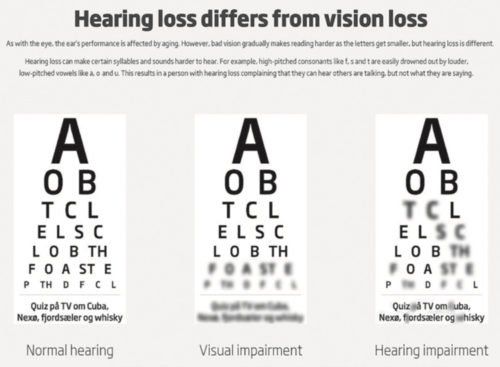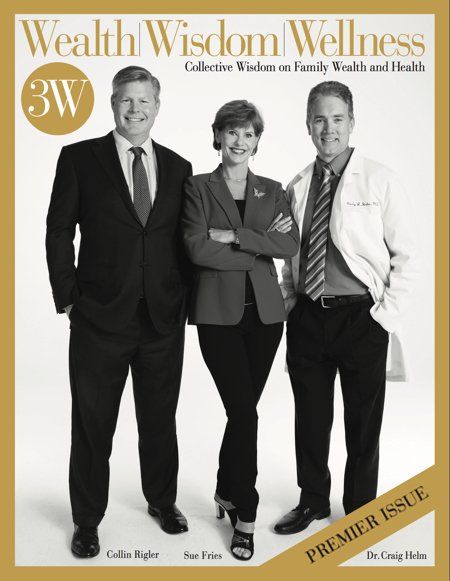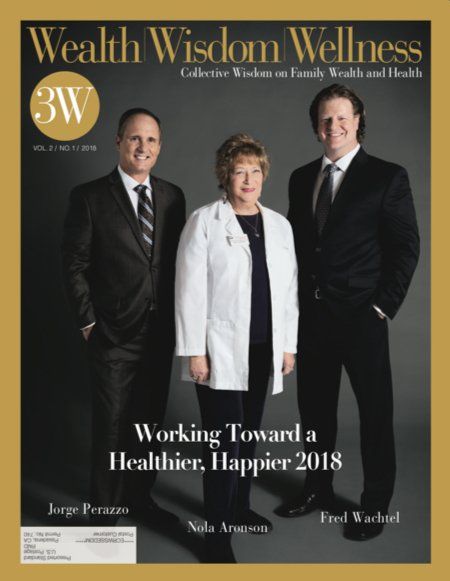“Can You Hear Me Now?”
From Issue #2
Audiologist Dr. Patrice Rifkind Understands How Hearing Care is Health Care
No one in the Santa Clarita Valley knows more about treatment for hearing loss than Dr. Patrice Rifkind, Au.D., Doctor of Audiology. Dr. Rifkind is owner of Audiology Associates Hearing Center, located right here in the Santa Clarita Valley for over 15 years. She’s helped thousands of people hear better and communicate with family, friends and business associates.
I visited with Dr. Rifkind in her state-of-the-art office in Santa Clarita, and gained a wealth of knowledge. “Hearing Care Is Health Care” is the slogan that appears on Dr. Rifkind’s informative book entitled, Hear Better: A Guide to Finding the Best Hearing Healthcare. Anyone with hearing loss can benefit from an evaluation and the appropriate care and treatment, but there are a lot of obstacles that audiologists like Dr. Rifkind face on a daily basis that prevent potential patients from receiving proper care.
One of the jewels contained in Dr. Rifkind’s book is a recommendation from Donald Schum, Ph.D., vice president of Audiology and Professional Relations for Oticon, Inc., a company that manufactures and supplies hearing aid solutions in the United States:
“Oticon encourages hearing care professionals to explain the health risk of untreated hearing loss to patients as a way of motivating them to do the right thing to treat their hearing loss. ‘Cognitive health is a concern across all age groups but especially among older adults,’ says Schum. It’s not just about hearing well today, it’s about the long-term effects of untreated hearing loss.”
Dr. Rifkind strongly encourages people to get their hearing tested and get a baseline of where they stand because as we get older we need to take care of our ears and that helps take care of our brain.
According to the Better Hearing Institute, of the 48 million Americans with hearing loss, only about 35 percent are over the age of 65. Of those:
- 1 in 6 baby boomers (ages 54-72) have some form of hearing loss.
- 1 in 14 Generation Xers (ages 34-53) already have hearing loss.
- 1.4 million Children (18 or younger) have hearing difficulty.
- 2-3 out of 1,000 infants are born with a hearing loss in one or both ears.
While hearing loss is commonplace across all age groups, the severity of hearing loss does have the tendency to increase with age. From 2000 to 2015, the number of Americans with hearing loss has doubled, and globally the number is up by 44 percent. This makes hearing loss the second most common health problem worldwide.
So what we are dealing with is a very serious health problem that has ramifications beyond just the loss of hearing. Hence the slogan, “Hearing care is health care.” The good news is that most people can benefit from early diagnosis of hearing loss and appropriate treatment, and experience some degree of improvement.
3W: I saw that sweet couple that just left your office together, and I thought to myself “That could be me when I’m older, coming to you for help with my hearing.” I wonder whether I might have a difficult time facing some type of hearing loss, or would I let vanity prevent me from getting a hearing aid?
Rifkind: I see cases like that all the time. A typical scenario is when a couple comes to see me and the husband needs a hearing aid, and he may not even remember having seen me years ago when he needed a hearing aid back then. Then they’ll come back because he’s complaining of a ringing in the ear, and I diagnose that he still needs a hearing aid, only his condition has worsened. I wish he hadn’t delayed getting help with his hearing.
3W: Besides the obvious need to be able to hear voices, important sounds, and music for example, what are some other motivations for protecting against hearing loss?
Rifkind: Hearing loss causes auditory deprivation to your brain. It really does damage over time. For example, people with only a mild hearing loss that don’t do anything about it are twice as likely to have dementia. And it increases exponentially in relation to a higher degree of hearing loss. People who suffer from hearing loss are also inclined to avoid social settings, conversations and forms of entertainment because they become more and more difficult. Untreated hearing loss also increases the likelihood of depression, isolation, paranoia, insecurity, and can cause negative effects on a variety of medical health conditions too.
3W: That’s incredible! You’re telling me hearing loss can lead to chronic disease and other medical health conditions if left untreated?
Rifkind: Yes, and in the typical scenario I just shared, the hearing spouse who is well meaning, actually slows down the realization by the spouse who needs treatment. Because of the damage that untreated hearing loss can do, and the problem with gradual hearing loss being unnoticed or denied, it would be wise to catch the condition earlier rather than later. Screening for hearing loss should begin in young adulthood (a baseline by age 40), particularly for vulnerable groups, such as diabetics.
3W: Once you’ve managed to convince your patient that considering a hearing aid would improve their quality of life, what aid would improve their quality of life, what steps do you take to turn it into a positive situation where they will wear their device all the time?
Rifkind: With today’s technology, there is less worry of embarrassment from misunderstanding conversation, social activities are more enjoyable if you can hear better, and people generally have happier relations if they can hear well. And there are several types and styles that often make it impossible for people to even know that you’re wearing a hearing aid, especially if you have hair that can easily cover it up.
3W: So vanity can delay people from seeing you?
Rifkind: I just saw Morgan Freeman on TV the other day doing a promo for a movie, and I could tell he was wearing a hearing aid. A group of us audiologists were talking about it on our private chat because we could see it. The one he was wearing was silver, and somebody said they would have gone with the slate color for him which would have blended in with his hair better. Today we can make hearing aids that match your hair and skin color making them almost invisible.
3W: It seems that there are a number of different facets to your job. How many hats would you say that you wear?
Rifkind: One of the things I find interesting about my job is I’m not just a doctor working with patients, I also diagnose hearing loss problems; I’m in some ways a therapist providing counseling because there’s a lot of counseling involved for my patients in what I do regarding the stress and anxiety. I’m also a teacher, because I have to instruct people on how to wear and care for their hearing aids. Another thing I do is program these devices, so I have to understand the mechanics of it. Many of my patients are in their 80’s and didn’t grow up using a smart phone, so I have to guide them on how to use their smart phone application, which is not so simple to use. I’m also a mechanic because I have to take the hearing aids apart sometimes, then reassemble them.
3W: Dr. Rifkind, by your own admission you’ve been obsessed with hearing for the last 20 years, and you’ve no doubt seen a lot of changes in treatment, equipment and technology. Where have technological advancements had the biggest impact on hearing health?
Rifkind: The human ear is so much more complicated than the eye, which is amazing because it functions like
a camera. But the ear is much more complicated. The inner ear, or cochlea, is often described as looking like a snail shell. It is the most complex part of the hearing system and is the organ of hearing. It contains thousands of nerve cells, called inner and outer hair cells. These hair cells cause the nerve to identify a sound and send it to the auditory cortex of the brain.
Today, we see cochlear implants that enable a deaf person to hear. A cochlear implant is an electronic device that replaces the function of the defective cochlea. The person is still considered deaf, but the cochlear implant does
the work of the defected parts of the inner ear to provide sound signals to the brain.
We also have hearing aids that are Bluetooth enabled and interact with your smart phone. So if your phone rings you push a button on phone app to answer the phone and hear it through the hearing aid. You can do the same with a television audio reception, or even listening to music on their phone. These are just a couple of advancements I’ve seen in my field that I never imagined would be possible.
3W: I’m curious. Have you ever seen someone who’s deaf and receives a cochlear implant that enables them
to hear for the first time in their life? (Dr. Rifkind takes me to her computer where she shows me a compilation video of people of all ages hearing for the first time. Mesmerized by the monitor, our goosebumps quickly turn to tears, as Dr. Rifkind graciously passes her box of tissues to me).
Rifkind: I can just sit and watch these for hours in the middle of the night if I’m not careful! We sometimes get the same reactions we just saw when someone gets a new hearing aid. I often tell the story about adult children bringing in their parents who are in their 90’s and the mother hasn’t heard for years. So we put the hearing aid on her and adjust it, and almost immediately the couple is sitting there deep in conversation, oblivious to everyone around them. Of course the kids are seeing this and getting all choked up.
3W: Dr. Rifkind, what you are able to do for people is nothing short of a medical miracle.
Please feel free to email Dr. Rifkind at HearingHealthAdvice@yahoo.com if you have any questions or would like some advice on how you can “Hear Better.”
Audiology Associates
23838 Valencia Blvd, Suite 100
Valencia, CA 91355
661-284-1900
661-284-1988 (fax)
www.audiologyassociates.net
Wealth Wisdom Wellness is published by CT3Media, Inc.
© Wealth | Wisdom | Wellness Magazine. All Rights Reserved.
ABOUT US
Wealth | Wisdom | Wellness is published by CT3Media, Inc.
© Wealth | Wisdom | Wellness Magazine. All Rights Reserved.








